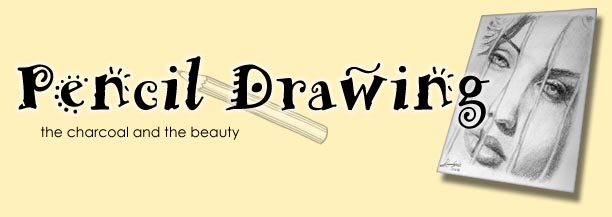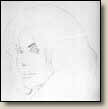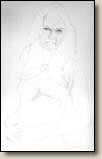
The Pencil Drawing Art Gallery
Note that the way I work may not be at all what is suited for you, but seeing I'm getting a lot of requests for tips, I thought I'd show you some stages in the process of my drawing.
FINISHING DRAWINGS
You may wonder where you can see the full versions of the drawings shown below. Well, besides the Drew Barrymore drawing (which I drew for a Drew Barrymore fan site, also viewable in the famous art section) and Froukje, these are all pictures that I actually have not completed. Not yet, though I know of some that will probably never be finished. Alas, that is life. It's a Gemini thing, not finishing stuff, so I'll blame astrology, lol.
THE MATERIALS
I
used to draw on A4 sized paper (21x29.7cm), but almost every drawing you'll
find on this site was done on A3 (42x29,7cm; about 16,5"x11,5");
about 120 to 160 grams.
I use
pencil types 2B and HB mostly. For darker parts, finishing touches, dark hair,
I use 3B, 4B and 6B as well. Be careful not too smudge with the 'fatter' pencils.
I sometimes use a direction of drawing: starting with the parts where you
hand doesn't need to be later on. And often I only use the 6B at the finishing
stage, to get a little extra contrast, when the chance of smudging is little.
KEEPING FOCUSED
I
have trouble with this, as you can see from a number of unfinished drawings
above. Though this is more of a character flaw on my part, keeping your drawings
to subjects that you really like or adore helps very much into finishing it.
Most of the drawings you can see on this site were done in about 6 to 8 hours
of work, so it's important to keep enjoying the drawing and not get bored
because things are going too slow.
LEARNING AT THE BEGINNING
When you've only started drawing, it is perhaps difficult to overcome your own inconfidence about ever becoming a good enough artist. Although surely some talent is always genetically useful, some things are generally true for all people.
- If you're drawing from a photograph, realise that drawing a black & white photo is easier than drawing a color photograph
- Hold your
drawing upside down from time to time. You will see new things that you
don't see when it's the right side up. This is a thing with the brain,
which tries to recognize things and passes that on to your consciousness.
That way, you'll miss details that in drawing are important (just like
reading a text where you have the word 'the' on both the end and the start
of the next line; 99% of the people will read over that unnoticed).
Holding it upside down will reveal areas that have flaws more easily. Some even propose drawing the entire drawing upside down (when you're drawing from a photo), but I tried that once and it didn't work out for me. But perhaps it's worth a try for you. - If drawing takes a long time, take a pause now & then. For me, I cannot draw when I don't feel like it, and after drawing for an hour or two I get seriously constrained in doing anymore detailed work. So, leave the work for some time, and get back to it later (a day or more).
- Frequently hold the drawing before you, so you can overview the entire picture. See if the pieces match up a bit, then get back to the detailed work.
- Have a look at the drawing in a mirror. This can reveal glitches that you don't see when normally looking at the drawing. This is much like holding the drawing upside down as mentioned above.
For other questions, feel free to mail me at ruud@racer.nl.







